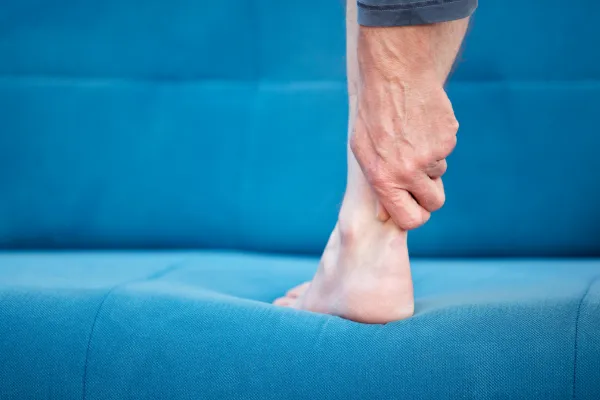
How Overuse and Poor Biomechanics Lead to Achilles Tendonitis and What You Can Do About It
Achilles tendonitis is a common injury that causes pain and inflammation in the Achilles tendon, the large tendon at the back of the ankle that connects the calf muscles to the heel. Whether you’re an athlete, an active individual, or someone with a physically demanding job, this condition can affect your daily life and limit your mobility. In this blog post, we’ll explore how overuse and poor biomechanics contribute to Achilles tendonitis and discuss physiotherapy strategies to help prevent and treat it effectively.
What is Achilles Tendonitis?
Achilles tendonitis occurs when the Achilles tendon becomes inflamed due to repetitive stress or overuse. The Achilles tendon plays a key role in walking, running, and jumping by helping the foot push off the ground. When overused or stressed, small tears in the tendon can develop, leading to pain, swelling, and stiffness, particularly after physical activity.
How Overuse Leads to Achilles Tendonitis
One of the most common causes of Achilles tendonitis is overuse, particularly when there is an increase in the intensity or frequency of physical activity. If your body is not given enough time to recover, the tendon may become overworked and irritated. Common overuse-related activities include:
Running or jumping: Excessive running, especially when suddenly increasing mileage or intensity, puts repeated strain on the Achilles tendon.
Repetitive movements: Activities that involve repeated pushing or jumping, such as in sports like basketball or soccer, increase stress on the tendon.
Lack of proper warm-up: Not warming up properly before engaging in physical activity can increase the risk of tendon injuries, including Achilles tendonitis.
When the tendon is repeatedly overloaded without proper recovery time, the fibers in the tendon become damaged, leading to inflammation, pain, and discomfort.
The Role of Poor Biomechanics in Achilles Tendonitis
Biomechanics refers to the way your body moves and the forces placed on your muscles and joints during movement. Poor biomechanics can contribute significantly to Achilles tendonitis by placing uneven stress on the tendon, which leads to irritation and injury. Common biomechanical issues that contribute to Achilles tendonitis include:
1. Flat Feet or Overpronation
People with flat feet or those who overpronate (when the foot rolls inward excessively while walking or running) tend to place increased stress on the Achilles tendon. This added strain can lead to tendonitis over time, as the tendon is required to compensate for the lack of proper foot support.
2. Tight Calf Muscles
Tightness in the calf muscles can affect the mechanics of how your foot moves. When the calves are tight, they increase the load on the Achilles tendon, especially during activities like running or jumping. This increased tension can contribute to tendon irritation.
3. Poor Footwear
Wearing improper shoes that do not provide enough support or cushioning for your feet can exacerbate Achilles tendon strain. Footwear that lacks proper arch support or is too stiff can alter your gait and increase the likelihood of tendonitis.
4. Imbalance in Strength and Flexibility
Weakness in the calf muscles or poor flexibility in the Achilles tendon can also lead to tendonitis. When muscles are weak or inflexible, the tendon has to absorb more force, increasing the risk of injury. Imbalances between the muscles in the front and back of the leg can contribute to improper mechanics and overuse of the Achilles tendon.
What You Can Do About It: Physiotherapy Solutions
Fortunately, Achilles tendonitis is treatable, and physiotherapy is one of the most effective ways to manage and recover from this condition. Here are some strategies to help prevent and treat Achilles tendonitis:
1. Eccentric Exercise Therapy
Eccentric exercises involve lengthening the muscle while it is under load, and they have been shown to be particularly effective in treating Achilles tendonitis. These exercises help promote tendon healing by strengthening the tendon and improving its ability to absorb stress. A common exercise is the heel drop, where you lower your body slowly on one leg while standing on your toes.
2. Stretching and Flexibility Exercises
Stretching the calves and Achilles tendon can help alleviate tightness and improve flexibility. Gentle stretching exercises should be incorporated into your daily routine to improve range of motion and reduce strain on the tendon.
3. Strengthening Exercises
Building strength in the calf muscles and improving overall lower body strength helps to better support the Achilles tendon and reduce strain. Resistance training exercises targeting the calves, quads, and hamstrings will help stabilize the lower leg and prevent further injury.
4. Manual Therapy
Manual therapy techniques such as massage, myofascial release, and soft tissue mobilization can help reduce tension in the calf muscles and Achilles tendon. These treatments also promote blood flow and encourage healing.
5. Footwear and Orthotics Recommendations
Proper footwear is crucial in preventing Achilles tendonitis. A physiotherapist can recommend shoes that provide better arch support and cushioning. In some cases, custom orthotics may be suggested to correct biomechanical issues like overpronation and improve overall foot alignment.
6. Activity Modification and Rest
Taking breaks from activities that strain the Achilles tendon is essential for healing. A physiotherapist can guide you in modifying your exercise routine to include low-impact activities that don’t exacerbate the condition, such as swimming or cycling. Adequate rest is vital to avoid further strain on the tendon.
When to Seek Professional Help
If you’re experiencing persistent or worsening pain in your Achilles tendon, it’s important to seek professional help. Early intervention can prevent the condition from progressing and help you recover faster. A physiotherapist can assess your movement patterns, identify biomechanical issues, and create a personalized treatment plan to address the root causes of your Achilles tendonitis.
Conclusion
Achilles tendonitis is a painful condition that can limit your activity levels, but with the right treatment and preventive strategies, you can heal and return to your regular routine. By addressing overuse and poor biomechanics through physiotherapy, strengthening exercises, and proper footwear, you can reduce the risk of tendonitis and promote long-term tendon health. At Peak Physiotherapy in Galway, we are committed to helping you recover and stay injury-free. Contact us today to schedule an assessment and take the first step toward relief.



